Realizing Children’s Rights in Mozambique
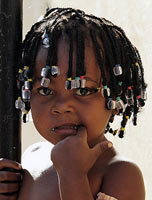
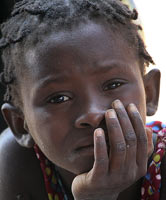
Mozambique has a very large child population, with more than half of the Mozambican population being children under 18 years of age. Considering the poor situation of the country, Mozambican children find themselves in horrible conditions, vulnerable to many dire situations such as child marriage, child labour, sex trafficking, povery, etc.

Children’s Rights Index : 5,85 / 10
Black level : Very serious situation
Population: 29,4 million
Pop. ages: 0-14: 45 %
Life expectancy: 59 years
Under-5 mortality rate: 71 ‰
Mozambique at a Glance
Mozambique, officially the Republic of Mozambique, is a country in Southeast Africa, bordered by the Indian Ocean, Tanzania, South Africa, Malawi and Zimbabwe. The advantageous geographical position has allowed Mozambique an important role in the maritime economy of the Indian Ocean.
Although advantageous in certain aspects, Mozambique’s population, rising approximately to 29.5 million in 2018, did not have the opportunity to enjoy these natural advantages. Indeed, Mozambique’s recent and turbulent history did not permit the stable development of a diversified economy. Before their independence in 1975 from Portugal, Mozambique had been providing mineral and agricultural products to its colonizers.
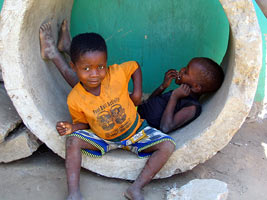
Following independence, Mozambique experienced Marxist and communist governments, supported by the Soviet Union and Cuba, and battled anticommunist forces funded by South Africa. Mozambique and South Africa have had strong relations concerning economic cooperation and investment since the interwar period (between First and Second World War). The violent acts of the communist governments lead to the displacement of four million civilians, and the death of a million more, as a result from violence, famine, and disease.
Although the physical violent conflict has stopped since 1992, the effects are still existent: in early 21st century, one million unexploded land mines still remained. They considered themselves free of landmines in 2015. Mozambique, due to its political history, has been considered one of Africa’s poorest nations, with a GDP per capita of 1,250 and an annual GDP growth of 3,70% in 2018.
However, this is on the path to change: with the discovery of gas fields in Mozambique’s coast in 2011, the country’s economy is suspected to ameliorate. The government is receiving help from the UN, with the United Nations Development Program, in order to fight poverty, with the aim to integrate Sustainable Development Goals. In this program, technical and organizational support is also given to the Ministry of Economy and Finance with a project strengthening the government’s capacities. The UN helps Mozambique implement their Agenda 2030. Although Mozambique has been improving, children’s rights are still hugely at risk.
Status of Children Rights
Mozambique has a very large child population, with 52% of the Mozambican population being children under 18 years of age (out of a population of 30,745,521 people). 23 % of the overall population are adolescents (age 10-19). The median age throughout the population is 17.2 years, demonstrating that Mozambique has a considerable number of young population. Mozambique is thus a very young population.
Considering the poor situation of the country, Mozambican children find themselves in horrible conditions, with 48 % of children living in absolute poverty. There are 2 million children living without parents. Children’s conditions are indeed miserable, disadvantaged even further by the economical situation in the country, and the historical past. We must adopt a holistic analysis of the child’s situation, gaining knowledge of the multidimensional poverty that they are facing (the way that poverty stemming from different sources affect children in different ways).
In 2007, Mozambique created the National Council on Children and a Children’s Parliament, in which children could reflect on their rights. They have been putting into action many laws, such as a Law on the Promotion and Protection of Children’s Rights and a Law on the Prevention and Combating of Human Trafficking, but they do not necessarily have the resources to reinforce this. They have shown certain efforts to take care of children’s rights, but they are not doing enough, due some what to lack of resources.
In order to understand the child’s situation, it is necessary to trace the child’s development, until he reaches age 18.
From the start, the child is under danger. The women in Mozambique are often weak, due to malnutrition. 70 % of pregnant women are indeed anemic, leading to low birth-weight babies. Although decreasing, maternal mortality and infant mortality are still high, with 408 births per 100 000 live births, and 124 per 1000 live births respectively. Over half of the women (58%) in Mozambique are infected with HIV, and only a tiny fraction of receive drugs to reduce the risk of passing on the disease. Many children are thus disadvantaged before their birth.
In regards to education, about 1.2 million children are out of school, more girls than boys. Access to schools is reduced in rural areas. Physical and sexual abuse also occurs in schools; particularly dangerous for some female students whose male teachers demand sex. Mozambique has been improving its education system, with the abolishment of school fees, free textbooks, and investments in classroom construction. Nonetheless, many changes are still needed for schools to be appropriate learning places for children.
Then, when they get past one year, they still face diseases such as malaria, respiratory infections, and diarrhea, fatal diseases for children under 5 years old. These diseases are preventable and treatable, but Mozambique does not have the adequate sources. Diarrhea is a major cause of child mortality, triggered by the lack of access to safe and clean water, a condition prominent across the country. In regards to food, 41% of children are chronically malnourished, worsening the situation for those children with anemic mothers. Two thirds of the children age 6-59 months are vitamin A-deficient, which puts them at risk for infectious diseases.
Many more children attend primary school in Mozambique today than they did before, with an increase from 32 % in 1992, to 83 % in recent years. Mozambique has definitely improved itself on education in the schools for children. However, the quality is debatable. There are too many children for the teachers available, and the teachers do not usually have sufficient training.
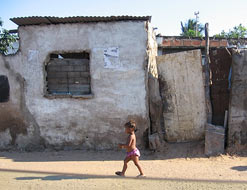
Mozambique’s economic poverty reflects in the education system, where inequalities persist based on geographical location, gender, and poverty of the family of the child. The teachers are limited, the children are too many, but not all children are even attending school. Teachers also have very limited knowledge. These conditions lead many children to leave school before completion. Leaving school can, and does, lead to work, which is not a suitable activity for children. The child labor percentage is 22%.
Teenagers (age 10-19) are also highly disadvantaged. Constituting more than 20% of the total population, the teenagers’ rights are not completely respected. In line with previous conditions of poverty, teenagers have to face high HIV/AIDS rates, and limited education opportunities, complicating adolescence for them. Access to secondary school is limited, and is usually only available to urban children, leading to lack of secondary schools in the country. High schools are even less heard of.
Overall, the estimated number of children out of school in Mozambique is 1.2 million. School conditions also discriminate on the basis of gender, where girls leave school with cultural pressure, to take care of younger siblings or sick family members, or get married. Child marriage is also an important issue in Mozambique, with 48 % children married before 18 years. Sexually also, Mozambican teenagers lack resources to know about HIV prevention methods, leading to more infections that could have been easily preventable. 200 000 children are living with HIV. Only 38% of children under 15 living with HIV are receiving treatment. Although these conditions worsen their living situations, teenagers are also able to collectively find solutions and voice their concerns, through media programs, youth groups, or community theater.
Educational Barriers for Children with Albinism In Mozambique
This issue is prominent in the Tete province of Mozambique, and in Maputo. Many children are often discriminated against and stigmatized, leading to their rejection from school, in the community, and sometimes by their own families. Human Rights Watch has conducted many interviews, meeting with children living with albinism and government officials, reviewing relevant national and international legislation and policies in 2019.
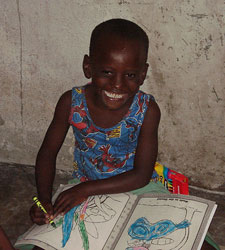
The threat was particularly high in 2014, with a surge of attacks on people with albinism, including kidnapping and trafficking. The reasons behind these kidnappings is due to a belief in witchcraft. People believe certain albino body parts produce wealth and good luck. Because of fear installed on by their peers, some children with albinism do not attend school, and they work instead often in the fields, which is often a worst alternative as they are particularly sensitive to sunlight.
Children with albinism can also have low vision, which is not accommodated for in the classrooms. Bullying occurs, where the schools only make it worse. The government is not making it any better: they need to provide more efforts to dispel deadly myths about albinism, and they need to ensure that all teachers in the public education system are sensitive to the needs of children. Insofar, they have taken certain action plans to eradicate violence against people with albinism, such as following the recommendations outlined in the Regional Action Plan on Albinism in Africa (as it is an issue throughout the continent), but they need to do more to inform the society. They need to look into protection, prevention, accountability, and non discrimination.
Disparities between the urban and the rural environment
A UNICEF research paper written in 2019 concerning the poverty situation in Mozambique concludes that 81% of children are deprived in at least two of their dimension categories (family, nutrition, education, child labor, health, WASH, participation, and housing). They find, more specifically, that deprivation rates are particularly high in rural areas, and in the provinces of Niassa, Zambezia, and Cabo Delgado.
Children who live in rural areas live in households whose parents or guardians are likely to be less educated, where the main activity is agriculture. The children are thus less likely to attend school, giving in to the endless cycle of poverty. Other factors of discrimination in the rural setting include unimproved source of water, unimproved sanitation, lacking information and communication device, lacking electricity, child labor, and nutrition. Those in the urban environment have also a better access to health. Girls in the urban environment also get married later on that girls in rural areas. The disparity can also be found in teenage pregnancies, but it is less accentuated.
Natural Disasters
There are also natural disasters which worsen the poverty situation in Mozambique. These hazards include floods (river, urban, coastal), extreme heat and wildfires, earthquakes, and water scarcity. During these times, Mozambique suffers greatly, with the loss of homes, the poorer quality of water, increasing individual poverty levels, and risks of diseases, food insecurity and nutrition crisis. Malaria, spread through water, spreads more easily during these times.
Recently, Mozambique has been affected by Cyclones Idai and Kenneth in 2019, and the floods in 2000, which has worsened the health conditions. UNICEF has worked in the region, improving the conditions of children, and providing vaccines, but the lack of a proper water supply is a continuous problem, which is worse in rural areas. Natural disasters have also worsened the already-poor human rights of many Mozambicans. Some survivors of Cyclone Idai in Mozambique were forced to have sex with community leaders in exchange for food, as reported by Human Rights Watch. The Mozambican government did not take the proper steps to punish this abuse.
Right to Health
Children, in Mozambique, are affected by malnutrition, malaria, cholera and diarrhea. Malaria is quite deadly, and it affects many children: 30 % of the mortality rate in children 7 years and below is attributed to malaria. HIV/AIDS is also affecting many people: with 1.5 million people affected in Mozambique. This situation is worsened in the rural areas, where access to hospitals and health care centers is reduced.
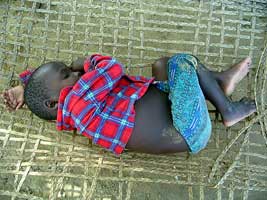
About 30 % of the population is not able to access health services, and only 50 % have access to an ‘acceptable’ level of health care. Throughout Mozambique, there are 3 doctors per 100 000 people, and the systems for tracking staff are weak. Of course, private health offers better health support, but it is only available to the wealthier part of society. The private hospitals are only available in certain cities. Mozambique’s government does not provide adequate services, and Mozambique often has to rely on external help, from other countries.
Right to Water
Only half of Mozambicans have access to improved water supply. Even though the situation has been getting better since the 1990s, the water supply is still significantly weak. This situation in rural areas is even worse, with only 1 in 5 people using surface water as their primary drinking water source. 76 % of the population do not have, or do not use, improved sanitation facilities. Differences occur between rural and urban, and also geographically, with services generally weaker in northern provinces. Climate change and natural disasters often worsen the condition of the water, inflicting risks of poorer health upon Mozambicans.
These conditions affect particularly children, who are at higher risk for diarrheal diseases, one of the leading causes of death among children. Children with disabilities are also deprived from an adequate water supply. Another group strongly affected by these conditions are the women and the girls, who are threatened due to a lack of toilets, in regards to the threat of sexual assault. UNICEF works in the region improving the water supplies, and access to it, but it is not enough, and the Mozambican government needs to act. There should also be more community involvement in order to provide water services to those in need.
Right to Nutrition
Mozambique is also affected by chronic malnutrition, which has an impact on school performance, household income, and continues the vicious cycle of poverty. It is more prominent in certain regions: Nampula, Cabo Delgado, Niassa, Zambézia. There are many reasons for this, one being that many Mozambicans rely on agriculture for their food, and the food supply does not grow much with droughts and floods. There is also an issue with the feeding of the babies, where only 13% of children aged 6-23 months receive the minimum diet. Many mothers are also highly anemic, taking a toll on the child before they are born.
Child Marriage and Teen Pregnancy and Stigma
Child marriage affects many girls in Mozambique: 48 % of girls are married before their 18th birthday, and 14 % are married before the age of 15. Mozambique has the highest child marriage prevalence rate, and has the 15th highest absolute number of child brides, with 649 000. Child marriage keeps girls out of schools, condemning them to a life of poverty, leaving them vulnerable to physical and sexual abuse.
Child marriage is driven by gender inequality, poverty, gender norms, and adolescent pregnancy, as reported by Girls Not Brides. In the urban areas, 5.9% women have pregnancies under 15, while in the rural areas 9.0% are pregnant under 15. Under 18, 33.2% girls have pregnancies in urban areas, while 44.4% have pregnancies in rural areas. Many of these pregnancies are associated with child marriage, although there has been a rise in pregnancies occurring out of wedlock.
Although these statistics are alarming, Mozambique is one of 20 countries committing itself to ending child marriage by the end of 2020, an issue on which they have already established progress, with the passing of the law that unanimously adopts a ban of marriage of children younger than 18 years older. This law is awaiting the president’s signature (President Filipe Nyusi) which he should sign without delay. These proposals have been ongoing since the 2016 Universal Periodic Review, in which Mozambique supported recommendations to establish the minimum age of marriage at 18 years old.
In addition to child marriage laws, however, the government also needs to take steps to enforce Mozambique’s new education strategy, which addresses educational needs of all girls, including pregnant and married girls and young mothers. There is still a lot of work to be done in this area. There is also a lot of stigma regarding child marriage, and teenage pregnancy, and this is because of the local cultures and traditions, transmitted and supported by community institutions, religious leaders and opinion leaders.
It is thus even harder to give these women proper human rights. There is also a stigma concerning HIV and AIDS. As reports explain, many women have been expelled from their homes and abandoned by their husbands because they were HIV-positive. The government needs to implement programs to inform, in order to get rid of the stigma that women with HIV are witches with the purpose of killing their husband.
LGBTQ Rights
Mozambique is one of the few countries in the African continent to refrain from laws forbidding homosexuality. It is considered an inspiring example for LGBT rights. Indeed, the UN Independent Expert on protection against violence and discrimination based on sexual orientation and gender identity has emphasized that Mozambique had relatively shielded LGBT people from the violence they may otherwise experience in other countries. However, this acceptance is limited: people of the LGBT community are meant to “hide their true nature.”
Therefore, Mozambique does not have internationally acceptable LGBT human rights laws. Their exclusion has lead to their marginalization. It is important to remember that lack of violence and official discrimination certainly does not equate lack of any other form marginalization. Due to this fact, the state must put in charge laws specifically protecting LGBT rights, throughout the country.
Child Labor and Sex Trafficking
Mozambique’s child labor situation is advancing moderately. They have made moderate efforts to eliminate the worst forms of child labor (sex trafficking). The amendment of the Law on the National System of Education raised the compulsory education age to 15, also establishing 15 as the minimum age for work, eliminating the exception for age 12 children to work. There has also been improvements concerning training for law enforcement officers, including workshops for journalists, in order to improve the government’s ability to prosecute human trafficking cases.
Although these changes look nice on paper, children in Mozambique are involved in the worst forms of child labor, with forced domestic work, and dangerous tasks in the production of tobacco. Inspectors do not receive sufficient training, and the government does not have the resources to enforce it. As a result, 22.5% of children age 5-14 work, and 69.5% of children age 5-14 go to school, with 22.4% combining both work and school.
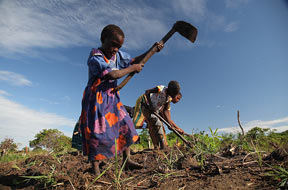
Children working in Mozambique work in the following sectors: agriculture, industry, services, and the worst forms of child labor, including commercial sexual exploitation (sometimes as a result of human trafficking), forced labor in agriculture, mining, and vending (sometimes as a result of human trafficking), and use in illicit activities, with drug trafficking. The government, in line with these statistics, has been putting forward policies in order to combat child labor.
In particular, Mozambique has launched a National Action Plan to Combat the Worst Forms of Child Labor (2017-2022), aiming to map 70% of occurrences of worst forms of child labor by province and activity, and withdraw 20,000 children from the worst forms of child labor, in order to enroll them in the Basic Social Subsidy program. This is a government and donor-funded program providing financial help to orphaned children, and aiming to improve secondary school attendance. There are also programs and NGO-funded programs that are aimed to eradicate child abuse related to child labor and sexual exploitation. There is still work to be done, and more cooperation needs to be completed between the labor law enforcement agencies.
Trafficking of children, for sexual exploitation and forced labor, is also an issue in Mozambique. Many Mozambicans are trafficked via Zimbabwe into South Africa, which has become a destination country for this purpose. Many Mozambican children refugees have been working on farms, receiving small allowances. Some children, and particularly women, are trafficked only for forced prostitution, and there is also a trafficking of humans for body parts (organ harvesting). Trafficking is prominent in Mozambique, and UNESCO has found many cases of trafficking of children in Mozambique. The government needs to act.
Right to Non-Discrimination
The Mozambican Constitution, created in 1990 after the national independence day on the 25th of June 1975, emphasizes citizens’ rights to “freedom, unity, justice and progress.” The government assumes that “Mozambican people were given back their fundamental rights and freedoms” on Independence. Mozambique’s government today is a multiparty parliamentary democracy with a freely elected republican form of government. Clearly, Mozambique has been committing many human rights violations, and they do not have the resources to rectify these.
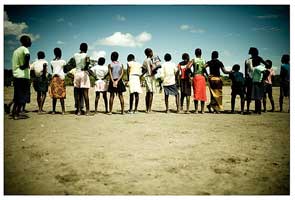
Children are not safe, and they are exposed to many dangerous situations. There is high poverty, low access to health, reduced access to education, numerous cases of child labor, and high disparity between the urban and the rural environment. Clashing with their constitution, there has also been reports revealing torture and other cruel punishment, harsh prison and detention center conditions, with some complaints about lack of freedom of expression and press and media freedom, with violence, harassment, and censorship. The government does not enforce laws effectively, which leads to corruption.
Right to Identity and Nationality
Citizenship is obtained by birth within the county, and there is a legal obligation to register the birth of a child, but these registrations are not always obtained. The organization for the birth registrations is decentralized. The birth registrations are delayed in rural areas, and there are often cultural practices which prevent a woman from exercising her legal right to register her child without the presence of the child’s father. This is problematic as women can, in poor familial situations, find themselves raising their child alone.
Women in rural areas have to travel long distances to reach civil registration offices. The lack of registration leads to many issues, such as the inability to attend school, reduced access to health care and secondary education, and an incapacity to receive public identity cards. A birth certificate is a proof of identity, and the gateway for the access to education, voting, and inheritance.
Children can easily not be registered, and not considered citizens in their own countries. Some rural families do not even know they have to register their children. There is also a fee for the birth certificate, although there is none for the birth registration. The governments in Canada and Norway have offered help in birth registration programs, proof yet again that Mozambique’s government is not doing enough.
Child-Sensitive Social Protection
In Mozambique, the government has put into place child-sensitive Social Protection programs with the help of UNICEF. These include the national Child-Sensitive Social Protection Strategy, the National Strategy to Prevent and Eliminate Child Marriage, and the Alternative Care Regulations. UNICEF has also helped with the plan for Civil Registration and Vital Statistics. With these goals, the government hopes to rectify multiple violations of human rights, hoping to create a holistic approach. Many other programs are needed in order to meet the children’s needs, but having a child-sensitive social protection program ensures the government’s concern with children’s rights, with the opportunity to address poverty, poor health.
Current Issues
In Mozambique, Islamist terrorist armed groups have developed, committing many terrorist attacks located in the northern province of Cabo Delgado. Islamic terrorists storm in villages and burn houses, forcing displacement. This increases during the times following tropical cyclones. Mozambique’s state security forces commit arbitrary arrests in their response to attacks. They commit human rights violations by not having the appropriate response to terrorism.
Child Soldiers
Thousands of child soldiers were used in Mozambique during the Mozambican Civil War, from 1977 to 1992. Mozambique, has however, supported a “straight-18” ban on conscription, which is less strict during times of war. Due to lack of armed conflict in Mozambique currently, there is no current evidence of underage recruitment. However, past child soldiers are still dealing with the trauma of the military experience, which the government does not accommodate very well.
Written by Leah Benque
Last updated on 9 February 2020
References:
Allianz World Wide Care. (n.d.), “Healthcare in Mozambique.”
BBC News. (2013, March 25), “Mozambique: From Marxism to market,” BBC News.
BBC News. (2020, January 17), “Mozambique country profile,” BBC News.
Girls Not Brides. (n.d.). “Mozambique,” Girls Not Brides. Retrieved from Girls Not Brides.
Machado, Zenaida. (2019, May 8), “Investigating ‘Sex for Food’ Allegations in Mozambique.
UN Should Work With Local Officials to Address Exploitation, Abuse,” HRW.
Mozlegal. (n.d.), “Constitution of the Republic of Mozambique,” Mozlegal.
Odhiambo, Agnes. (2019, June 19), “Mozambique Passes Law to End Child Marriage.
Education Key to Realizing Promise to Protect Girls,” HRW.
UNICEF. (n.d.), “Adolescent and Social Norms” UNICEF Mozambique.
UNICEF. (n.d.), “Child Protection” UNICEF Mozambique.
UNICEF. (n.d.), “Education” UNICEF Mozambique.
UNICEF. (n.d.), “Emergency” UNICEF Mozambique.
UNICEF. (n.d.), “Health,” UNICEF Mozambique.
UNICEF. (n.d.), “Nutrition,” UNICEF Mozambique.
UNICEF. (n.d.), “Water, Sanitation and Hygiene” UNICEF Mozambique. Retrieved from UNICEF.
United Nations Development Programme. (n.d.), “Sustainable Development Goals,” UNDP.
UNESCO. (2006), “Human Trafficking in Mozambique: root causes and recommendations,” UNESCO.
World Health Organization. (n.d.). “Mozambique’s health system,” WHO.

